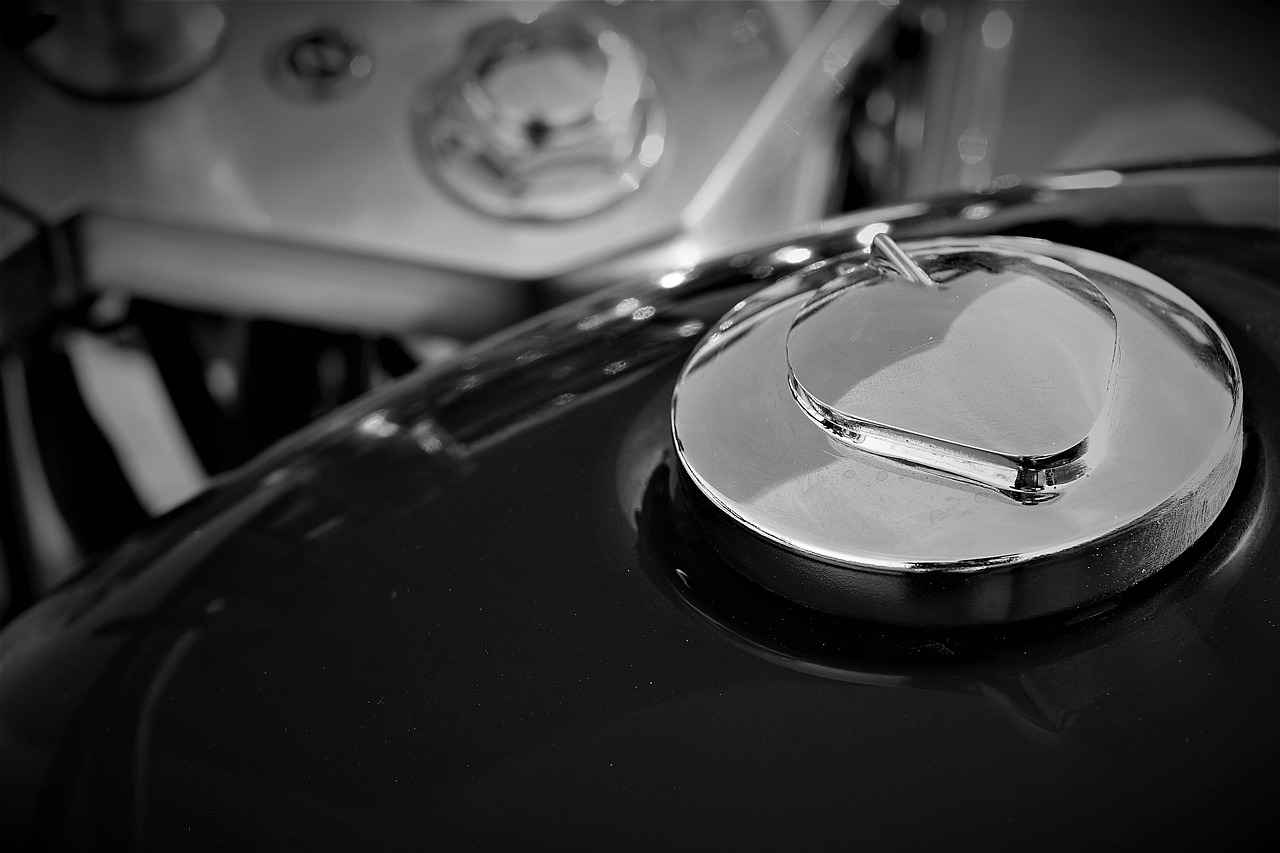This article provides a comprehensive guide on resetting the oil life indicator on a Honda Accord, ensuring you maintain optimal vehicle performance and longevity. Regular maintenance is essential for any vehicle, and understanding how to reset your oil life indicator is a crucial part of that process.
Resetting your oil life indicator is vital for several reasons. First, it helps you keep track of when your engine oil needs to be changed, promoting engine health and efficiency. Neglecting this can lead to engine wear and tear, ultimately resulting in costly repairs. By resetting the indicator, you ensure that you are adhering to a maintenance schedule that aligns with your vehicle’s needs.
The oil life indicator should be reset after every oil change. It’s important to reset it immediately after the oil change to avoid confusion regarding when the next change is due. Typically, oil changes are recommended every 5,000 to 7,500 miles, but this can vary based on driving conditions and oil type.
- Ignition key (or push start button)
- Owner’s manual for reference
- Knowledge of your specific model (2013 and newer or older)
Follow these steps to reset the oil life indicator on your Honda Accord:
- Turn the ignition to the ON position without starting the engine.
- Use the gas pedal to press down three times.
- Observe the oil life indicator on the display; it should reset to 100%.
- Turn the ignition to the ON position.
- Press the reset button on the oil life indicator.
- Confirm the reset by checking that the percentage returns to 100%.
While resetting the oil life indicator, be aware of these common mistakes:
- Not resetting immediately after an oil change.
- Confusing the reset procedure between different model years.
- Ignoring the owner’s manual for specific instructions.
Regular oil changes are essential for maintaining engine performance. It’s generally recommended to change the oil every 5,000 to 7,500 miles, depending on the oil type and driving conditions. Always refer to your owner’s manual for the most accurate intervals.
Watch for these indicators that suggest it’s time for an oil change:
- Engine oil appears dark and dirty.
- Oil change light is illuminated on the dashboard.
- Unusual engine noises or knocking sounds.
Maintaining regular oil changes not only enhances your vehicle’s performance but also improves fuel efficiency and prolongs engine life. Clean oil ensures proper lubrication and cooling of engine parts, reducing the risk of overheating and wear.
Your Honda Accord’s owner’s manual is an invaluable resource. It provides specific guidelines tailored to your model, including recommended oil types, change intervals, and reset procedures. Always consult it for the best practices regarding your vehicle’s maintenance.
If you’re unsure about resetting the oil life indicator or performing oil changes, consider consulting a professional mechanic. They can provide expert assistance and ensure that your vehicle remains in top condition, helping you avoid potential issues down the road.

Why Resetting Oil Life is Important?
Maintaining your vehicle’s health is paramount for ensuring its longevity and performance. One critical aspect of this maintenance is the oil life indicator, which serves as a reminder for oil changes. Resetting your oil life indicator is not merely a routine task; it plays a significant role in the overall efficiency of your vehicle.
When you reset the oil life indicator, you are essentially recalibrating the vehicle’s maintenance schedule. This action signals that the oil has been changed, allowing the onboard computer to accurately track the remaining life of the new oil. Without this reset, the indicator may provide misleading information, leading to either premature oil changes or, conversely, extending the interval too long, which can lead to severe engine issues.
Why is it essential to reset the oil life indicator? The oil in your engine acts as a lubricant, reducing friction and heat. Over time, oil degrades due to exposure to heat and contaminants, losing its effectiveness. If the oil is not changed in a timely manner, it can lead to increased wear on engine components, reduced fuel efficiency, and ultimately, costly repairs. By resetting the oil life indicator, you ensure that you adhere to a proper maintenance schedule, thereby enhancing your vehicle’s performance.
Moreover, a well-maintained vehicle is more reliable. Regularly resetting the oil life indicator and changing the oil as indicated can help prevent unexpected breakdowns. This reliability not only saves you time and money but also provides peace of mind while driving.
In addition to maintaining efficiency, resetting the oil life indicator is also beneficial for the environment. Proper oil changes reduce harmful emissions and ensure that your vehicle runs cleaner. This is particularly important in today’s world, where environmental concerns are at the forefront of automotive technology.
How often should you reset the oil life indicator? Generally, it is recommended to reset the indicator every time you change the oil, which is typically every 5,000 to 7,500 miles, depending on your vehicle’s specifications and driving conditions. However, always consult your owner’s manual for the most accurate information regarding your specific model.
In summary, resetting the oil life indicator is a simple yet crucial maintenance task that contributes significantly to your vehicle’s efficiency and longevity. By understanding its importance, you can help prevent potential engine issues and keep your Honda Accord running smoothly for years to come.

When Should You Reset the Oil Life?
Maintaining your vehicle’s performance is essential, and one of the most critical aspects of this maintenance is keeping track of your oil life. Knowing when to reset the oil life indicator is pivotal for ensuring that your car operates efficiently and effectively. This article will delve into the nuances of when to reset the oil life indicator, providing you with the insights needed to keep your Honda Accord in optimal condition.
The oil life indicator is a feature in many modern vehicles, including the Honda Accord, designed to monitor the condition of your engine oil. It calculates the remaining life of your oil based on various factors, including driving habits and conditions. Resetting this indicator at the right time is crucial to avoid potential engine damage and maintain vehicle performance.
Resetting the oil life indicator should be done immediately after you change your oil. This practice ensures that the indicator accurately reflects the new oil’s lifespan. Typically, the oil change interval is recommended every 5,000 to 7,500 miles, depending on your driving conditions and the type of oil used.
- Oil Change Completed: The most obvious sign is when you have completed an oil change.
- Oil Life Notification: If your dashboard displays a notification indicating low oil life, it’s time to reset the indicator.
- Routine Maintenance: Regularly scheduled maintenance should also prompt a reset, even if you haven’t reached the mileage limit yet.
By ensuring that the oil life indicator is reset promptly, you can prevent misleading readings that may lead to either premature oil changes or, conversely, delaying necessary changes. This balance is essential for maintaining engine health and performance. A well-timed reset helps in:
- Preventing Engine Wear: Fresh oil lubricates components effectively, while old oil can cause wear and tear.
- Enhancing Fuel Efficiency: Regularly changing oil can improve fuel economy, saving you money in the long run.
- Extending Engine Life: Consistent maintenance practices contribute to the longevity of your engine.
Resetting the oil life indicator is a straightforward process. For most Honda Accord models, it can be done using the following steps:
1. Turn on the ignition without starting the engine.2. Press the "Menu" button on the dashboard.3. Navigate to "Vehicle Settings."4. Select "Oil Life" and then choose "Reset."5. Confirm the reset action.
Always refer to your owner’s manual for model-specific instructions, as the process may vary slightly.
In summary, understanding when to reset the oil life indicator is vital for the overall health of your Honda Accord. By keeping track of your oil changes and resetting the indicator accordingly, you ensure that your vehicle remains in top condition. Regular maintenance not only enhances performance but also prolongs the life of your engine. Always consult your owner’s manual for specific guidance tailored to your model, and don’t hesitate to seek professional assistance if you have any doubts.

Tools Needed for Resetting Oil Life
When it comes to maintaining your Honda Accord, one of the essential tasks is resetting the oil life indicator. This process ensures that your vehicle’s oil change schedule stays on track, helping you avoid potential engine issues. Before diving into the reset procedure, it’s crucial to understand the tools and equipment you will need. Being well-prepared will not only streamline the process but also enhance your confidence in performing the task.
The following tools are necessary for successfully resetting the oil life indicator on your Honda Accord:
- Owner’s Manual: This is your primary resource for understanding the specific steps required for your model. Each Honda Accord may have slight variations in the reset process.
- Ignition Key: You will need the ignition key to turn on the vehicle’s electrical system without starting the engine. This allows access to the dashboard settings.
- Trip Reset Button: This button is usually located on the dashboard and is essential for navigating through the oil life reset options.
- Digital Display: Familiarize yourself with the digital display on your dashboard, as this will show the current oil life percentage and guide you through the reset process.
Before starting the reset, ensure that you have these tools at hand. Having them ready will help you avoid interruptions and make the procedure more efficient.
Understanding how to use these tools is just as important as having them. For instance, knowing the location of the trip reset button and how to navigate through the dashboard settings can save you time and frustration. Additionally, consulting your owner’s manual can provide insights into any model-specific procedures that might be required.
Moreover, being familiar with the tools helps you troubleshoot any issues that may arise during the reset process. If you encounter difficulties, you can refer back to your manual or seek assistance without feeling overwhelmed.
Before you initiate the reset, take a moment to ensure your vehicle is parked on a level surface and that the ignition is off. This preparation will help you avoid any accidental starts and ensure that you can focus solely on the reset procedure.
Once you have all the necessary tools and have prepared your vehicle, you’re ready to proceed with resetting the oil life indicator. Follow the detailed instructions specific to your Honda Accord model to ensure a successful reset.
By taking the time to understand the tools and preparing adequately, you will not only simplify the reset process but also enhance your overall vehicle maintenance routine. This proactive approach will contribute to the longevity and efficiency of your Honda Accord.

Step-by-Step Guide to Reset Oil Life
This section provides a detailed, step-by-step guide on how to reset the oil life indicator on various Honda Accord models. Resetting the oil life indicator is essential for maintaining your vehicle’s performance, ensuring that you keep track of oil changes effectively.
The oil life indicator is a crucial feature in Honda Accord vehicles that alerts you when it’s time to change your oil. It is based on driving conditions and habits, which means it can vary from one driver to another. Regularly resetting this indicator after an oil change helps keep your maintenance schedule on track.
Follow these steps to reset the oil life indicator on your Honda Accord:
- Step 1: Turn the ignition to the ON position without starting the engine. This is usually done by pressing the start button twice without pressing the brake pedal.
- Step 2: Use the Menu button on the steering wheel to navigate to the Settings option on the display screen.
- Step 3: Select Vehicle Settings and then scroll to Oil Life Reset.
- Step 4: Confirm the reset by selecting Reset when prompted. The oil life indicator should now read 100%.
For models from 2013 onward, the reset process is slightly different due to updated technology:
- Press the Home button on the display.
- Navigate to Settings, then Maintenance.
- Select Oil Life and choose Reset.
For older models, the procedure is as follows:
- Turn the ignition to the ON position.
- Press the Gas Pedal three times within 10 seconds.
- The oil life indicator will flash and then reset to 100%.
While resetting the oil life indicator, avoid these common mistakes:
- Not turning the ignition to the correct position.
- Skipping steps or rushing through the process.
- Failing to confirm the reset successfully.
In addition to resetting the oil life indicator, consider these maintenance tips:
- Always use the recommended oil type for your specific model.
- Keep a maintenance log to track oil changes and other services.
- Consult the owner’s manual for any model-specific instructions.
By following these steps and tips, you can ensure that your Honda Accord remains in optimal condition, enhancing its performance and longevity.
For Honda Accord Models 2013 and Newer
For Honda Accord models from 2013 onward, resetting the oil life indicator is a straightforward process that ensures you maintain your vehicle’s performance. This guide will walk you through the specific steps required to reset the oil life, including the necessary key button sequences.
The oil life indicator is a crucial feature in your Honda Accord that alerts you when it’s time to change the engine oil. This system is designed to monitor the oil’s condition and provide timely reminders, helping you avoid engine wear and tear.
After changing the oil, it is essential to reset the oil life indicator to ensure accurate tracking of the next oil change. Failing to reset this indicator can lead to confusion about when your next oil change is due, potentially resulting in engine damage over time.
- Step 1: Turn the ignition to the ON position without starting the engine.
- Step 2: Press the gas pedal three times within 10 seconds. This action will trigger the reset process.
- Step 3: Once you see the oil life indicator reset to 100%, turn off the ignition.
- Step 4: Start the engine to confirm that the oil life indicator has been successfully reset.
If the oil life indicator does not reset after following the steps, consider the following:
- Ensure that you are pressing the gas pedal correctly and within the time frame.
- Check for any electrical issues that might affect the dashboard display.
- If problems persist, consult your owner’s manual or contact a professional mechanic.
Regular maintenance is key to keeping your Honda Accord running smoothly. Here are a few tips:
- Always use the recommended oil type as specified in your owner’s manual.
- Keep track of your oil change schedule to avoid overdue maintenance.
- Monitor your vehicle for any signs of oil leaks or engine issues.
By following these steps and tips, you can ensure that your Honda Accord remains in excellent condition, providing you with reliable performance for years to come. Regularly resetting the oil life indicator is a simple yet effective way to keep track of your vehicle’s maintenance needs.
For Honda Accord Models 2012 and Older
Resetting the oil life indicator on older Honda Accord models is a crucial maintenance step that ensures your vehicle continues to operate efficiently. If you own a Honda Accord from 2012 or earlier, you might be wondering about the correct reset procedure. This guide will walk you through the necessary steps, ensuring that you can easily reset the oil life indicator without any hassle.
The oil life indicator is designed to remind you when it’s time to change your oil. Failing to reset this indicator after an oil change can lead to confusion about when the next service is due. By resetting the oil life indicator, you maintain an accurate record of your vehicle’s maintenance schedule, promoting better engine health and longevity.
Follow these steps to reset the oil life indicator on Honda Accord models from 2012 and older:
- Turn on the Ignition: Insert your key into the ignition and turn it to the “ON” position, but do not start the engine.
- Access the Trip Meter: Press the Trip button on the dashboard until the “OIL LIFE” display appears on the screen.
- Reset the Oil Life: Once the oil life is displayed, press and hold the Reset button (usually located near the trip meter button) for about 10 seconds. The oil life percentage will start to blink.
- Confirm the Reset: Release the button, then press it again to confirm the reset. The oil life should now display 100%.
- Turn Off the Ignition: Finally, turn off the ignition and remove the key.
While the reset procedure is straightforward, some common mistakes can occur:
- Not Holding the Reset Button Long Enough: Ensure you hold the reset button for the full 10 seconds to allow the system to recognize the reset.
- Turning the Ignition Off Too Soon: Make sure to complete the entire process before turning off the ignition to avoid any errors.
It is best to reset the oil life indicator immediately after changing the oil. This practice ensures that you have an accurate reminder for your next oil change, typically every 5,000 to 7,500 miles, depending on your driving habits and the type of oil used.
Your Honda Accord’s owner’s manual is an invaluable resource that provides specific instructions tailored to your model. Always refer to it for detailed maintenance guidelines, including the oil change intervals and reset procedures.
If you feel uncertain about performing the reset procedure yourself, don’t hesitate to consult a professional mechanic. They can assist with the reset and provide additional maintenance services to keep your Honda Accord in optimal condition.
By following these steps and guidelines, you can ensure that your Honda Accord remains well-maintained and performs at its best. Keeping track of your oil life is essential for the longevity and efficiency of your vehicle.

Common Mistakes to Avoid
When it comes to resetting the oil life indicator on your Honda Accord, avoiding common mistakes can significantly enhance your experience and ensure that your vehicle remains in peak condition. Many drivers overlook the intricacies of this process, leading to unnecessary frustration and wasted time. This section will delve into the frequent errors encountered during the reset process and provide you with tips to sidestep these pitfalls effectively.
- Ignoring the Owner’s Manual: One of the most prevalent mistakes is not consulting the owner’s manual before starting the reset. Each model may have unique steps, and relying on general advice can lead to errors. Always refer to your manual for specific instructions tailored to your model year.
- Failing to Turn Off the Ignition: Many users forget to turn off the ignition before attempting the reset. This can prevent the process from initiating properly. Ensure that the vehicle is in the correct state before proceeding with the reset.
- Not Following the Correct Sequence: Each Honda Accord model has a specific sequence of button presses required to reset the oil life. Skipping steps or pressing buttons out of order can lead to failure in resetting the indicator. Take your time to follow the instructions carefully.
- Overlooking Additional Maintenance Indicators: Resetting the oil life indicator does not negate the need for other maintenance tasks. Some drivers mistakenly believe that once the oil life is reset, their vehicle is ready to go. Always check for other maintenance alerts that may require attention.
- Neglecting to Reset After an Oil Change: After changing the oil, many forget to reset the oil life indicator. This can lead to confusion regarding when the next oil change is due. Always perform the reset immediately after an oil change to keep track of maintenance schedules accurately.
- Using Incorrect Tools: Some drivers attempt to use makeshift tools or methods to reset the oil life indicator, which can cause damage to the vehicle’s electrical system. Always use the recommended tools and methods as outlined in your owner’s manual.
By being aware of these common mistakes and taking proactive steps to avoid them, you can streamline the reset process and maintain the longevity and performance of your Honda Accord. Remember, a well-maintained vehicle not only runs better but also saves you money in the long run.

How Often Should Oil Be Changed?
Maintaining your Honda Accord’s engine health is crucial for its performance and longevity. One of the most critical aspects of vehicle maintenance is understanding how often oil should be changed. This guide will cover the recommended oil change intervals and the factors that influence these recommendations.
The general guideline for changing oil in a Honda Accord is every 5,000 to 7,500 miles or every 6 months, whichever comes first. However, this can vary based on several factors:
- Type of Oil: Synthetic oils can often last longer than conventional oils, extending the interval between changes.
- Driving Conditions: Frequent short trips, heavy traffic, or extreme temperatures may require more frequent oil changes.
- Engine Age: Older engines may need oil changes more frequently due to wear and tear.
Regular oil changes are essential for maintaining optimal engine performance. Fresh oil lubricates engine components, reduces friction, and helps to prevent overheating. Over time, oil can become contaminated with dirt and debris, leading to potential engine damage if not changed regularly.
The quality of the oil used in your Honda Accord can significantly affect how often it needs to be changed. Higher-quality synthetic oils may provide better protection and longer intervals between changes compared to standard oils. Always consult your owner’s manual for manufacturer recommendations regarding oil type.
Being aware of the signs that indicate an oil change is necessary can help prevent engine damage:
- Oil Change Light: If this light illuminates on your dashboard, it’s time for a change.
- Dark or Dirty Oil: Check the oil dipstick; if the oil appears dark and gritty, it’s due for a change.
- Unusual Engine Noises: Increased noise from the engine can indicate insufficient lubrication.
Your Honda Accord’s owner’s manual is a vital resource for understanding the specific maintenance schedule, including oil change intervals tailored to your model and engine type. Following these guidelines can help you maintain your vehicle’s performance and reliability.
If you’re unsure about how often to change your oil or need assistance, consider seeking help from a professional mechanic. They can provide expert advice and ensure that your Honda Accord remains in optimal condition.
In conclusion, understanding the recommended oil change intervals for your Honda Accord is crucial for maintaining the vehicle’s performance and extending its lifespan. Regularly changing your oil not only enhances engine efficiency but also contributes to better fuel economy and overall vehicle health.

Signs You Need an Oil Change
Understanding the is crucial for maintaining your vehicle’s health, particularly for models like the Honda Accord. Regular oil changes can prevent significant engine damage and ensure your car operates at peak performance. Here are some key indicators that it’s time for an oil change:
- Oil Change Light Activation: One of the most straightforward signs is the activation of the oil change light on your dashboard. This indicator serves as a reminder that your oil needs to be changed.
- Dark or Dirty Oil: If you check your oil and notice it appears dark or gritty, it’s a clear sign that it has lost its effectiveness. Fresh oil should be a golden or amber color.
- Engine Noise: If your engine starts making unusual noises, such as knocking or ticking, it could indicate that the oil is too dirty or low to lubricate the engine components effectively.
- Oil Smell: A strong smell of oil inside your vehicle can indicate a leak or that the oil is burning, both of which require immediate attention.
- Excessive Exhaust Smoke: If you notice blue or gray smoke coming from your exhaust, it may be a sign that your engine oil is burning, which necessitates an oil change.
- Oil Level Drops: Regularly checking your oil level is essential. If you find that your oil level is consistently low, it may be time for a change.
- Change Interval Reached: Following the recommended oil change intervals is vital. For many Honda Accords, this is typically every 5,000 to 7,500 miles, but always consult your owner’s manual for specifics.
Ignoring these signs can lead to serious engine problems, including decreased performance and costly repairs. Regular maintenance, including timely oil changes, not only keeps your Honda Accord running smoothly but also extends its lifespan.
In addition to these signs, it’s important to remember that different driving conditions can affect how often you need to change your oil. For example, if you frequently drive in stop-and-go traffic, tow heavy loads, or drive in extreme temperatures, you may need to change your oil more frequently.
Ultimately, staying proactive about your vehicle’s maintenance, including recognizing the signs for an oil change, can save you time, money, and hassle in the long run. Make it a habit to check your oil regularly and consult your owner’s manual for specific guidelines tailored to your Honda Accord.

Benefits of Regular Oil Maintenance
Maintaining your vehicle’s oil is not just a routine task; it is a fundamental aspect of ensuring your car operates efficiently. Regular oil maintenance plays a significant role in enhancing your vehicle’s overall performance, fuel efficiency, and longevity. Neglecting this essential service can lead to a host of problems that could have been easily avoided.
One of the primary reasons for regular oil maintenance is to keep the engine clean and lubricated. Oil acts as a lubricant, reducing friction between moving parts, which minimizes wear and tear. When oil becomes dirty or degraded, it loses its effectiveness, leading to increased engine strain and potential damage.
Regularly changing your oil can significantly improve your vehicle’s fuel efficiency. Clean oil allows for better engine performance, which means your engine doesn’t have to work as hard to operate. This can result in better gas mileage and less frequent visits to the gas station.
Engines that receive regular oil maintenance tend to last longer. By ensuring that the oil is always clean and at the appropriate level, you are preventing the buildup of sludge and contaminants that can lead to severe engine issues. This proactive approach can save you substantial amounts in repair costs over time.
The frequency of oil changes can vary based on several factors, including the type of oil used, driving conditions, and the manufacturer’s recommendations. Generally, it is advisable to change your oil every 3,000 to 5,000 miles for conventional oil, while synthetic oils may last up to 7,500 miles or more. Always refer to your vehicle’s owner’s manual for specific guidelines.
- Engine noise increases
- Oil looks dark and gritty
- Oil level is low
- Dashboard oil change light is on
To maintain optimal oil health, regularly check the oil level and quality. Using the right oil type as specified in your owner’s manual is crucial. Additionally, consider scheduling oil changes with a trusted mechanic who can also check other vital systems in your vehicle.
Failing to perform regular oil changes can lead to costly repairs. Engine replacements and major repairs due to neglected oil maintenance can run into thousands of dollars. Investing in regular oil maintenance is far more cost-effective than dealing with the aftermath of engine failure.
In summary, regular oil maintenance is a critical practice for any vehicle owner. It not only enhances performance and fuel efficiency but also prolongs the life of your engine. By staying on top of oil changes and maintenance, you can ensure that your vehicle remains in excellent condition for years to come.

Consulting the Owner’s Manual
Your Honda Accord’s owner’s manual is not just a book; it is a comprehensive guide that provides essential information regarding the maintenance and care of your vehicle. This manual is specifically tailored to your model, offering valuable insights into various aspects of vehicle upkeep, including oil change intervals and reset procedures.
The owner’s manual serves as a critical resource for understanding your Honda Accord’s specifications and maintenance requirements. It contains details about the right type of oil to use, the recommended oil change frequency, and the necessary steps for resetting the oil life indicator. Following these guidelines can help you avoid potential issues that may arise from neglecting proper maintenance.
- Maintenance Schedule: A detailed schedule indicating when to perform routine maintenance tasks.
- Oil Specifications: Information on the type of oil suitable for your engine.
- Reset Procedures: Step-by-step instructions for resetting the oil life indicator.
- Emergency Procedures: Guidelines for handling unexpected issues, such as engine overheating.
To make the most out of your owner’s manual, consider the following tips:
- Familiarize Yourself: Spend some time reading through the manual to understand the layout and sections.
- Keep It Accessible: Store the manual in your vehicle or a place where you can easily access it when needed.
- Refer to It Regularly: Consult the manual during maintenance tasks or when you notice any unusual behavior from your vehicle.
If you happen to misplace your owner’s manual, don’t worry! Most manufacturers, including Honda, provide digital copies of the manuals on their official websites. You can easily download a copy specific to your model, ensuring you have access to all necessary information.
Neglecting to consult your owner’s manual can lead to several common mistakes:
- Incorrect Oil Type: Using the wrong oil can lead to engine damage.
- Missed Maintenance: Skipping scheduled maintenance can result in costly repairs.
- Improper Resetting: Failing to reset the oil life indicator correctly can lead to confusion about when your next oil change is due.
By adhering to the guidelines in your owner’s manual, you can:
- Enhance Vehicle Performance: Regular maintenance keeps your engine running smoothly.
- Extend Lifespan: Proper care can significantly prolong the life of your vehicle.
- Improve Resale Value: A well-maintained vehicle tends to have a higher resale value.
In summary, your Honda Accord’s owner’s manual is an invaluable tool that can help you maintain your vehicle effectively. By consulting it regularly, you can ensure that you are following the best practices for oil changes and other essential maintenance tasks, ultimately leading to a more reliable and efficient driving experience.

Seeking Professional Help
Maintaining your Honda Accord is essential for ensuring its longevity and optimal performance. One critical aspect of this maintenance is managing the oil life indicator, which alerts you when it’s time for an oil change. However, if you’re feeling uncertain about how to reset this indicator or handle oil changes, can be a wise decision.
When it comes to vehicle maintenance, professional mechanics bring a wealth of knowledge and experience. They understand the intricate workings of your Honda Accord and can provide tailored advice based on your vehicle’s specific needs. By consulting a mechanic, you can ensure that your oil change and indicator reset are performed correctly, avoiding potential errors that could lead to engine issues.
- Expert Knowledge: Mechanics are trained to recognize the signs of wear and tear in your vehicle, ensuring that any underlying issues are addressed promptly.
- Quality Assurance: Professional services often use high-quality oil and filters, which can enhance your vehicle’s performance and fuel efficiency.
- Time Savings: A professional can complete the oil change and reset process quickly, freeing up your time for other important tasks.
- Comprehensive Checks: Many mechanics will perform additional inspections during an oil change, helping you catch potential problems early.
If you notice any of the following signs, it may be time to consult a professional:
- Your oil life indicator is flashing, but you are unsure how to reset it.
- You experience unusual noises from the engine that may indicate oil problems.
- Your vehicle has not had an oil change in over six months.
- You are unsure about which type of oil is best suited for your Honda Accord.
When searching for a mechanic, consider the following tips:
- Check Reviews: Look for mechanics with positive customer feedback and high ratings.
- Certifications: Ensure the mechanic has appropriate certifications, such as ASE (Automotive Service Excellence).
- Experience with Honda: A mechanic familiar with Honda vehicles will have specific insights into your model.
In conclusion, while it may be tempting to handle oil changes and resets on your own, consulting a professional mechanic can provide peace of mind and ensure your Honda Accord remains in excellent condition. Their expertise can help you avoid mistakes, extend the life of your engine, and keep your vehicle running smoothly.
Frequently Asked Questions
- How do I know when to reset the oil life on my Honda Accord?
It’s best to reset the oil life indicator after every oil change. This ensures that you keep track of your oil’s health and maintain your vehicle’s performance. If your oil life percentage drops below 15%, it’s a good sign that an oil change is due.
- Can I reset the oil life indicator without changing the oil?
While you technically can reset the oil life indicator without changing the oil, it’s not recommended. Doing so can lead to engine issues down the line, as the oil may not be providing the necessary protection. Always change your oil before resetting the indicator.
- What tools do I need to reset the oil life on my Honda Accord?
You don’t need any special tools to reset the oil life indicator. Just your car keys and a few moments of your time to follow the reset procedure outlined in your owner’s manual.
- Is there a difference in resetting the oil life for different Honda Accord models?
Yes, the reset procedure can vary slightly between models, especially between those made in 2013 and newer versus older models. It’s important to refer to your owner’s manual for the specific steps for your model year.
- What are the signs that I need to change my oil?
Common signs include a dark, gritty texture of the oil, unusual engine noises, or the oil change light on your dashboard. Regularly checking your oil can help you catch these signs early.



